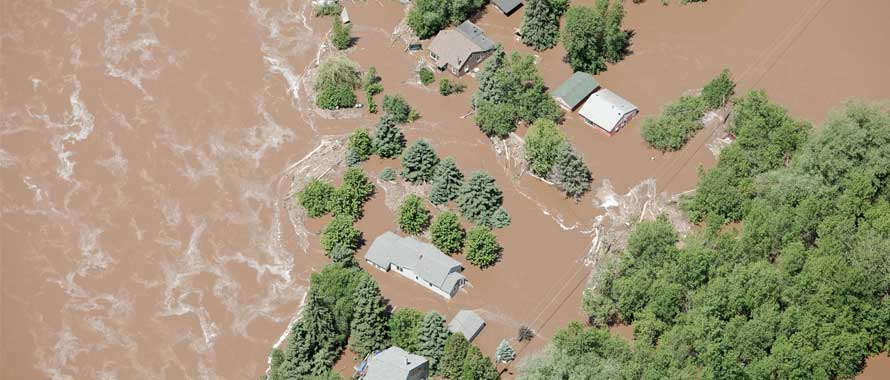In terms of damage, floods are the leading disaster in the United States, and the recovery costs grow yearly.1 Hurricane Harvey – the most powerful hurricane to hit the U.S. in 12 years – made landfall on the evening of August 25, 2017, and since then, the accompanying rainfall during the following week has submerged some areas around Houston in more than 50 inches of water.2
As insurance brokers and agents prepare to lend countless clients assistance in the wake of the storm, Donald R. Carson Sr., Executive Vice President and Managing Director, Burns & Wilcox in Dallas/Fort Worth, Texas offered Insurance Market Source three pieces of advice to arm them with.
1. Stay safe
Already, the effects of Harvey are unprecedented. Unfortunately, with several injuries and fatalities spanning Texas due to flooding, it is imperative that brokers advise clients that safety should be the number one priority. However, if they can safely begin to mitigate exposures, brokers can advise clients to do a few additional things to ensure their family and their homes are safe.
“During a flood, water has a high potential of being contaminated,” said Carson. “If clients have the correct gear, they can protect themselves and their families with waders, boots, or gloves to handle contents.”
Additionally, brokers and agents should advise clients to turn off the main water valve, as well as the main electrical box in the home. This will help minimize damage to the home and its occupants. For the future, it is important to identify routes to local shelters, as well as planning and practicing an evacuation plan for family members.
2. Keep good records
After securing their family and their home, the next action brokers can advise clients to take is to record everything. Regardless to whether it is a covered expense or loss, clients should keep an account of all activity during a flood or other natural disasters of great magnitude.
“Brokers and agents should advise clients to keep all receipts, as additional living expenses and temporary home repairs can be reimbursed,” said Carson.
Clients should also refrain from throwing out any damaged property without, first, taking a photo or video of it. In fact, clients should take numerous photos to aid in the insurance claims process.
“Photographic evidence of all visible damage, height of flood waters in and around the house, and damaged contents is extremely helpful,” said Carson. “You can never take too many pictures.”
Oftentimes, clients can become focused on major issues or large property losses and may overlook minor details that can strongly assist in returning their lives to a normal state. Photos of every part of the home allow insurance professionals to visualize a complete representation of any and all losses.
3. Limit Damage
Since clients will be navigating one of the most difficult times in their personal lives, it is important that brokers and agents remain helpful during any client interaction. Advising a client of additional steps that can be taken to minimize unforeseen expenses and potential prolonged displacement is useful. This will benefit the client and the broker alike, strengthening the relationship between the two and mitigating additional complications on a claim.
“Brokers can inform clients to remove the water and damaged contents such as carpet, rugs, furniture, and other damp materials from the home,” said Carson. “These additional actions will limit the potential for mold to set in.”
Another proactive tip to guide clients through the recovery process is to remove the affected portion of the sheet rock on all walls within the home.
“Mold generally becomes prevalent in 24 to 48 hours, so it is important to remove sheet rock early if possible,” said Carson. “However, if clients have been evacuated and are unable to make it back into their neighborhood, there is little that can be done until the storm subsides.”
Brokers and agents can help clients understand when a situation is out of their hands and guide them to lean on their policy in these instances.
Plan ahead
Meteorologists began warning Houston-area and other coastal residents of Hurricane Harvey nearly one week in advance. For the future, brokers can advise clients to call ahead of natural disasters, if possible, to ensure their preparedness, inquire about tips that can assist in their safety, and help allow for a smoother claims process in the future.
Even if clients do not live in flood zones, they can become flood victims. Homeowners policies typically cover damage from wind and hail but exclude flood damage. In certain circumstances, Homeowners insurance policies can be packaged with Primary and Excess Flood coverage. Living outside of flood zones increases policy affordability and owning homes with proper venting and elevation can lower costs even more.
Many coastal clients are purchasing flood insurance through the National Flood Insurance Program (NFIP). This government-funded insurance program offers two types of flood coverage: dwelling coverage (up to $250,000), and contents coverage (up to $100,000). However, private market Flood Insurance offers Primary and Excess Flood packages. For a home worth $500,000, for example, coverage from the NFIP will fall short of the home’s value. Brokers and agents can gain the additional $250,000 of coverage for clients in an Excess Flood policy from the specialty insurance market.
Hurricane Harvey is estimated to cost tens of billions of dollars according to The Wall Street Journal.3 In catastrophic situations such as this, brokers and agents can go out of their way to counsel clients on mitigating the effects of the disaster.


